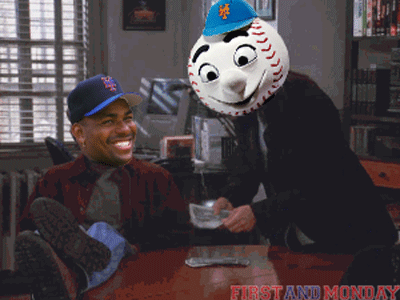
Tomorrow will be July 1st. For teachers that means summer school, prep for next year, and some well-deserved time off. For Major League Baseball fans, July 1st is Bobby Bonilla day. For any non-baseball fanatics out there, Bonilla remains famous not for his playing career, which ended in 2001, but for an odd deferred-money contract the New York Mets gave him in 2000. Instead of paying him roughly $6 million at the time, the Mets instead offered to pay him in yearly installments, paid out on July 1st every year from 2011 until 2033. In short, the club offered him something very similar to a pension.
Even though Bonilla was getting paid in the millions, his story relates to millions of teachers: In most cases a pension might not be worth it over the long run.
Let's unpack this comparison a little further.
In 2000, the Mets wanted to save some cash, so they delayed Bonilla's salary. In exchange Bonilla would receive a much greater, albeit delayed, sum. It seemed like a win-win. The club was deeply invested with Bernie Madoff and they (incorrectly) assumed that they would earn good returns in the market. Many pension funds make the same mistake. Nevertheless, the Mets were after much-needed financial wiggle room to make payroll, and giving Bonilla a contract worth more than a player of his caliber and age might have otherwise demanded seemed prudent at the time.
Teacher pensions are a lot like Bonilla’s deal.
Nearly all teachers receive a pension, also known as defined benefit (DB) retirement plan. Here is how it works. States and often districts pay a percentage of a teacher’s salary into a pension fund. Teachers also are required to make an annual contribution. At retirement teachers receive annual benefits according to a formula based on their age, years of experience, and an average of their final salaries.
Like the Bonilla arrangement, teachers forgo higher salaries today in exchange for more lucrative benefits tomorrow. This approach reduces how much money states need to pay in salaries and provides teachers with the opportunity to make up, and maybe even exceed, the difference later through the pension fund. A win-win, right?
Unfortunately, however, neither Bonilla nor teachers made out as well financially as one might have guessed. According to an estimate by ESPN last Bonilla Day, had he taken the money upfront and invested it, even with a conservative rate of return, he would have made more money. And for the Mets, they're still paying a retired 50 year-old over $1 million a year.
Most teachers get a raw deal as well. In the current pension system it takes teachers on average 24 years to earn a pension as valuable as the money they invested themselves. Many teaches would be better off financially if they could take their pension payments as salary. Or alternatively, a defined-contribution (DC) plan such as a 401k plan would produce a more valuable retirement benefit for most teachers.
The news isn't any better for states. Nationally, states carry around half a trillion dollars in unfunded liabilities. Pension funds in Puerto Rico and states such as Illinois and New Jersey face bankruptcy if they don't reform their systems.
The truth is that Bonilla, bad deal aside, will very likely be fine financially. For millions of teachers, however, it is a different ball game.
